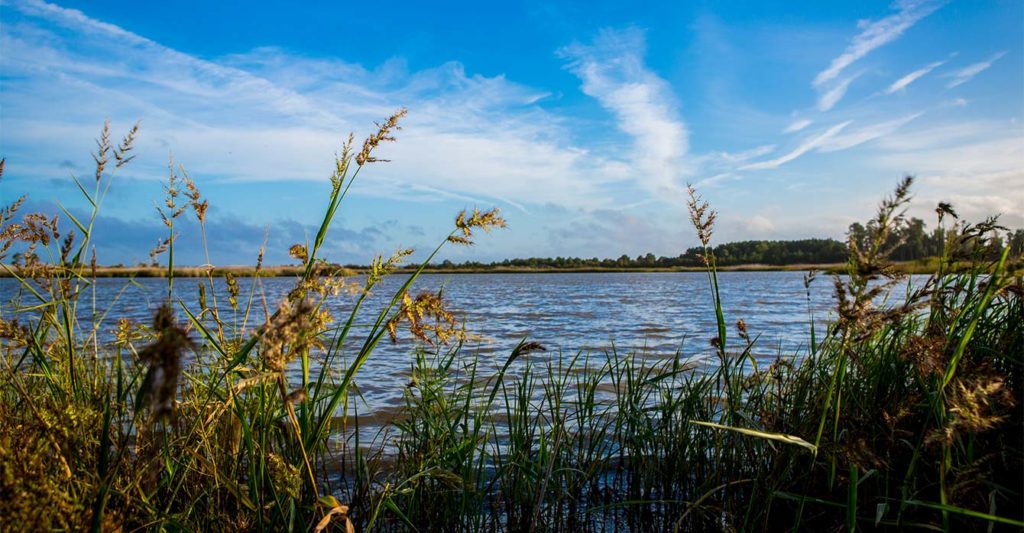
Photo: Shutterstock.
By Bruce Ingram
Come spring, the Hog Island WMA offers some of the best wildlife watching in the Old Dominion. That’s because this season is an excellent time to observe bald eagles and other avian species.
“Hog Island WMA is part of the James River eagle concentration area,” says Stephen Living, a DGIF Lands and Facilities manager. “As such, it is heavily used by resident and migratory bald eagles throughout the year. Dozens of bald eagles can be seen at Hog Island on any given day, foraging around the impoundments or along the James River shoreline. There are at least three active bald eagle nests on Hog Island this year, but there are as many as seven historical nest sites.”
 Living adds that DGIF personnel conduct moist soil management for waterfowl, which involves draining water from the impoundments at Hog Island to help foster plants attractive to migrating and wintering ducks. When these impoundments are lowered in the spring, gizzard shad respond by journeying to them. Carp also spawn during this time frame and attempt to enter the impoundments as well. These events reach their peak anytime from March through May and the large numbers of fish stacked up in the surrounding creeks and canals provide a veritable feast for eagles, herons, and any number of other wildlife species.
Living adds that DGIF personnel conduct moist soil management for waterfowl, which involves draining water from the impoundments at Hog Island to help foster plants attractive to migrating and wintering ducks. When these impoundments are lowered in the spring, gizzard shad respond by journeying to them. Carp also spawn during this time frame and attempt to enter the impoundments as well. These events reach their peak anytime from March through May and the large numbers of fish stacked up in the surrounding creeks and canals provide a veritable feast for eagles, herons, and any number of other wildlife species.
One thing visitors should not expect to see at the Hog Island WMA is, well, hogs.
“There are no feral hogs present there,” Living says. “The name is derived from the Jamestown settlement days when the early colonists would keep their pigs on the island.”
The Hog Island WMA consists of 3,908 acres in three separate tracts on the lower Tidal James. Two tracts (Hog Island and Carlisle) are in Surry County; the third tract (Stewart) lies in Isle of Wight County. The public land is also an excellent place to view a wide variety of waterfowl and shorebirds as well as raptors such as ospreys. Tidal marshes, loblolly pine forest, agricultural land, and ponds enrich the very diversified habitat there. For more information: www.dgif.virginia.gov/wma/hog-island.


